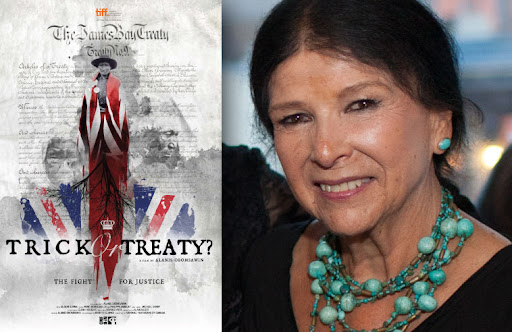Dear Colleagues,
The first week of November marks Treaties Recognition Week in Ontario. This week aims to increase understanding of the history of treaties, and awareness about treaty rights and treaty relationships between Indigenous and non-Indigenous communities in Ontario.
The Art Gallery of Ontario operates on land that is Michi Saagig Nishnawbe territory. Toronto is governed by treaty 13 between the Mississauga of the Credit and the Canadian government. It has also been occupied by other Anishinaabe, Haudenosaunee and Wendat confederacies. Since 1701, Toronto is governed by the Dish with One Spoon treaty between the Anishinabeg, the Haudenausonee and allied nations to peaceably share and care for resources around the Great Lakes.
As treaty people living in Canada, we have an important responsibility to learn about treaties and Nations and to understand the conditions upon which we are to share resources and land with the many Nations who are the original stewards of this land for over 10,000 years.
In recognition of Treaties Recognition Week, here are some resources to support your learning:
Please take time to watch a virtual documentary viewing of Trick or Treaty by Alanis Obomsawin.

SYNOPSIS: Directed by Alanis Obomsawin, Trick of Treaty? examines the effects and legacy of Treaty No. 9 (1905), signed by the Government of Canada and Indigenous peoples in the James Bay area. The treaty had a significant impact on Indigenous peoples, who were relocated to reserves as a result, allowing the natural resources both below and above ground to become the property of the Government of Canada. Trick or Treaty? chronicles the struggles of Indigenous peoples since the inception of the Treaty process in Canada, exploring the varying opinions on the stipulations of Treaty No. 9 and discrepancies between oral and written history. The film traces the oral history of a family whose grandfather was an original signatory of Treaty No. 9; he explains the interpretation of the treaty that has been passed down through generations. Evidence is provided that Treaty No. 9 has not fulfilled the intentions that were outlined in 1905 and 1906. The film then moves on to cover recent events, where Indigenous peoples are challenging the status quo that has resulted from the Treaty process. Trick or Treaty? succinctly and powerfully portrays one community’s attempts to enforce their treaty rights and protect their lands, while also revealing the complexities of contemporary treaty agreements.
Trick or Treaty? made history as the first film by an Indigenous filmmaker to be part of the Masters section at TIFF when it screened there in 2014. 84 minutes.
WATCH HERE: This film has been made available as an educational resource to watch on your own time, via the National Film Board of Canada:
https://www.nfb.ca/m/playlists/c8f986faee52434d8981a007e70325aa/playback/
Other Resources:
- OISE We Are
All Treaty People – Learning Module
- OISE Lunch and Learn Dish With One Spoon Wampum with Rick Hill Sr. (Six Nations version) – Virtual lecture hosted by the Indigenous Education Network on November 19, 2020
- Alan Ojiig Corbiere: The Underlying Importance of Wampum Belts (Anishinaabe version) – Virtual lecture hosted by Chippewas of Rama First Nation, March 2015
- WAMPUM TALK: We Are All Treaty People – Virtual lecture hosted by National Centre for Truth and Reconciliation on September 28, 2021
- “In Our Words” – Understanding Treaties (1 of 8 video series) – developed by the First Nations, Métis & Inuit Education Association of Ontario, September 2020
If you have any questions, please feel free to contact me at [email protected]
Cian B. Knights (pronouns: she/her)
Manager, Diversity, Equity and Inclusion